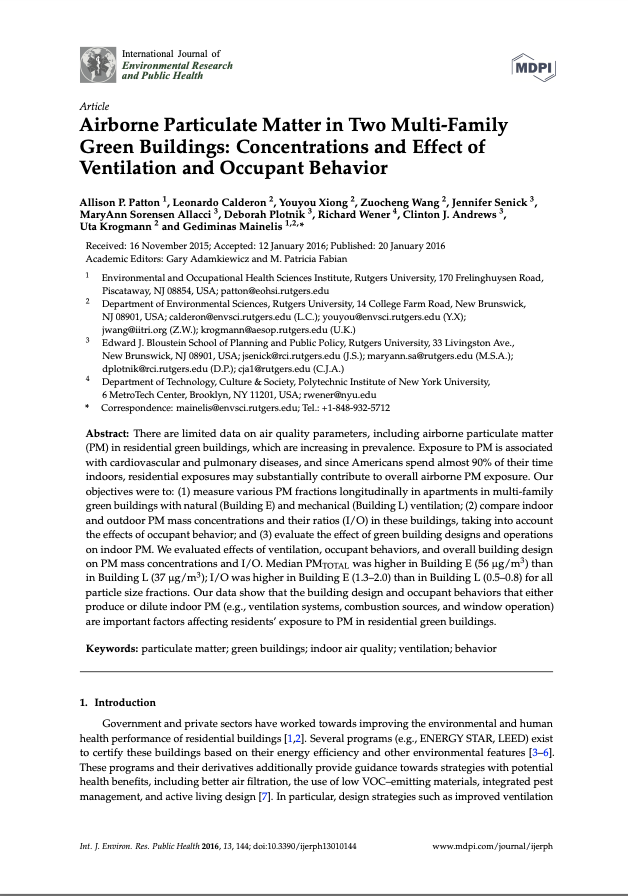There are limited data on air quality parameters, including airborne particulate matter (PM) in residential green buildings, which are increasing in prevalence. Exposure to PM is associated with cardiovascular and pulmonary diseases, and since Americans spend almost 90% of their time indoors, residential exposures may substantially contribute to overall airborne PM exposure. Our objectives were to: (1) measure various PM fractions longitudinally in apartments in multi-family green buildings with natural (Building E) and mechanical (Building L) ventilation; (2) compare indoor and outdoor PM mass concentrations and their ratios (I/O) in these buildings, taking into account the effects of occupant behavior; and (3) evaluate the effect of green building designs and operations on indoor PM. We evaluated effects of ventilation, occupant behaviors, and overall building design on PM mass concentrations and I/O. Median PMTOTAL was higher in Building E (56 μg/m3) than in Building L (37 μg/m3); I/O was higher in Building E (1.3–2.0) than in Building L (0.5–0.8) for all particle size fractions. Our data show that the building design and occupant behaviors that either produce or dilute indoor PM (e.g., ventilation systems, combustion sources, and window operation) are important factors affecting residents’ exposure to PM in residential green buildings.
Airborne Particulate Matter in Two Multi-Family Green Buildings: Concentrations and Effect of Ventilation and Occupant Behavior.
Citation:
Patton, A.; Calderon, L; Xiong, Y.; Wang, Z.;Senick, J.; Sorensen Allacci, M.; Plotnik, D.; Wener, R.; Andrews, C.; Krogmann, U.; & Mainelis, G. (2016). Airborne Particulate Matter in Two Multi-Family Green Buildings: Concentrations and Effect of Ventilation and Occupant Behavior. International Journal of Environmental Research and Public Health, 13(144). https://doi.org/doi:10.7282/t3-2ew7-cm91
